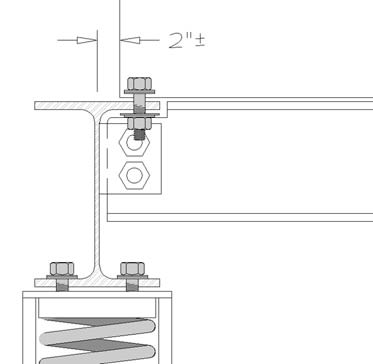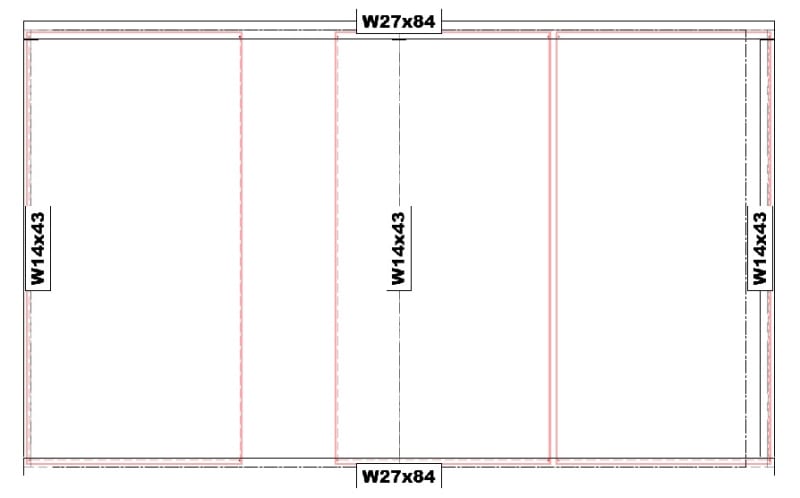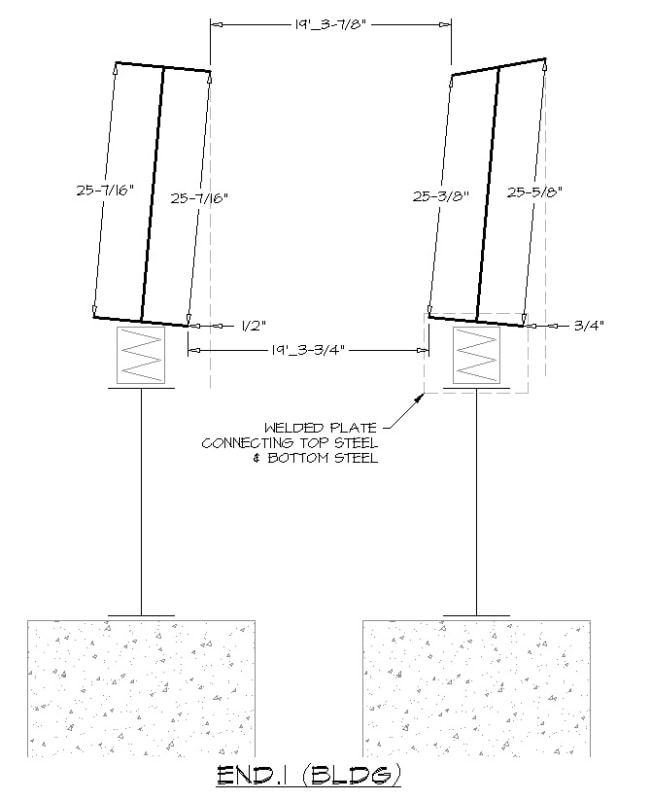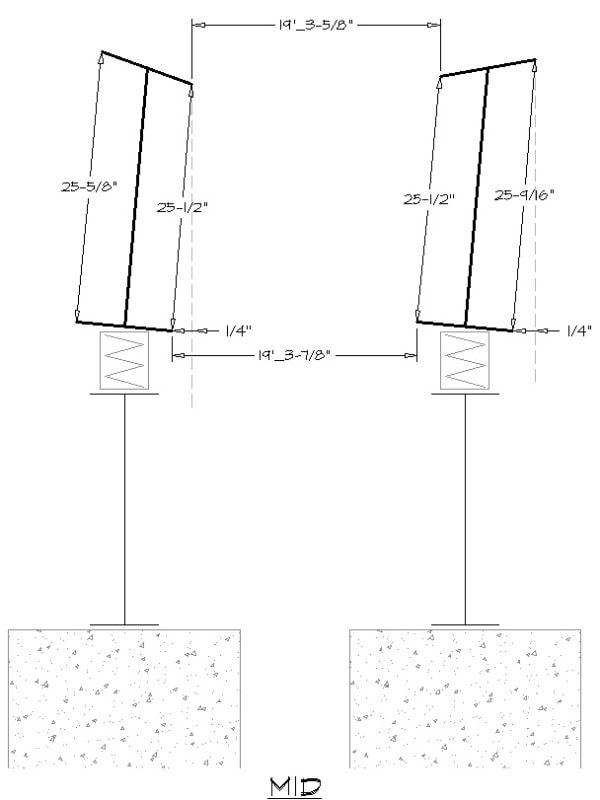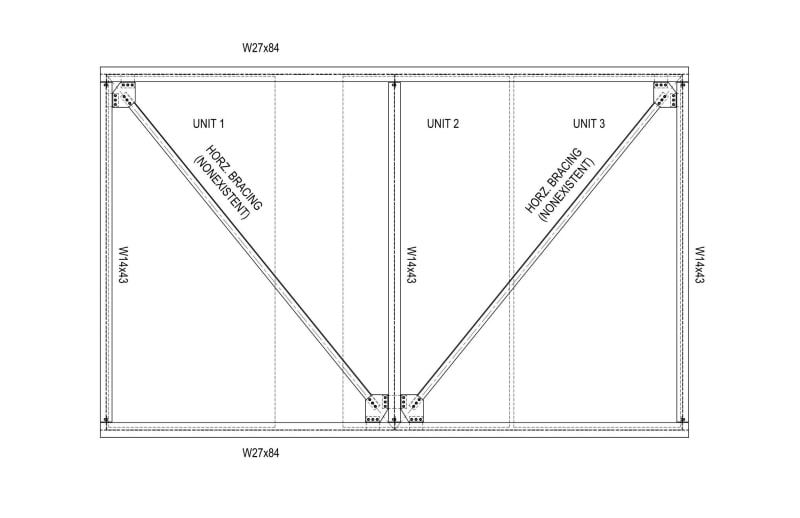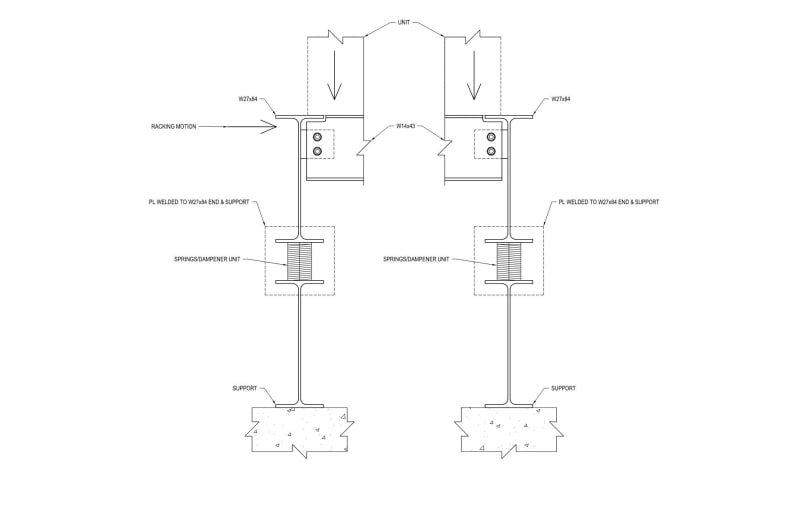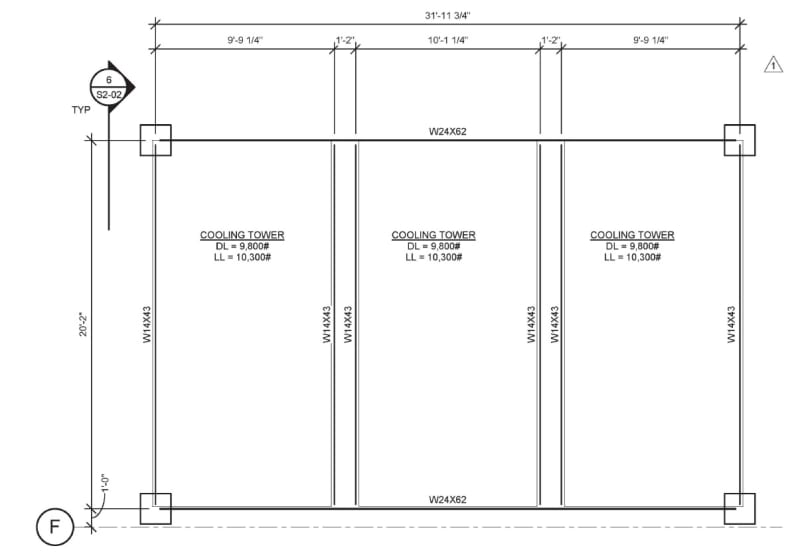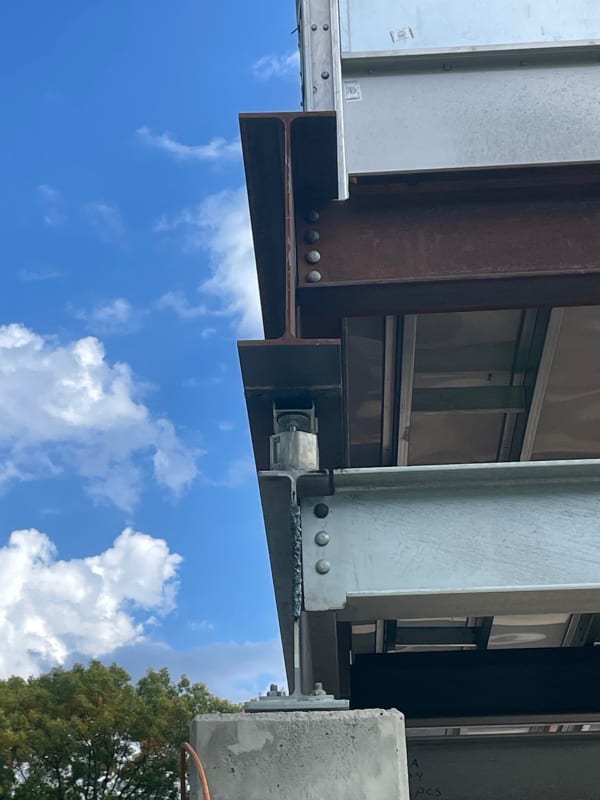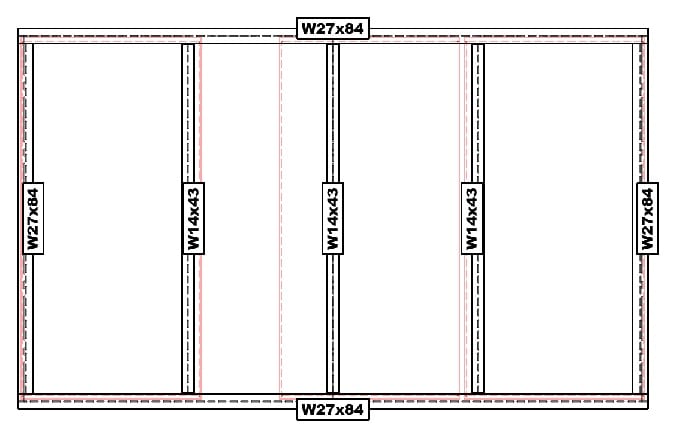Update: after visiting the site the issue isn't entirely clear, but there are some more variables to consider.
1) There are springs between the unit support steel & the steel anchored to the concrete footings; springs are only about 5"wide, and the b
f of the unit support steel is 10"w
2) The entire support assembly was shipped with welded plates at each corner - the contractor reached out us after removing one of said plates & noticed the steel frame "racking"
3) Measurements that were taken don't quite jibe with what was expected - they were taken at each end & the center, and each location indicates a somewhat different scenario (?)
a) end.1 _ beam to beam top flanges distance measurement is 1/8" longer than the bottom flanges measurement
one beam showed the inside height (d-2t
f) to be nearly 1/4" shorter on the inside of the frame
both of the top flanges appeared to lean to one side - one @ 1/2"offset & the other @ 3/4"offset
b) mid _ beam to beam top flanges distance measurement is 1/4" shorter than the bottom flanges measurement
both beams showed the inside height to be nearly 1/8" shorter on the inside of the frame
both of the top flanges appeared to lean 1/4" the same direction
c) end.2 _ beam to beam top flanges distance is 1/8" longer than the bottom
both beams showed the inside height to be nearly 1/8" taller on the inside of the frame
both of the top flanges appear to lean nearly 1/8" the same direction
I've included an exaggerated sketch of each scenario below to help clarify:
Do you feel removing the welded plates on the remaining corners would let the frame "settle", or would it only make matters worse?
rb1957: 1) the 3 transverse beams are bolted onto a welded shear plate/angle; 2) design load along each W27 is approximately 1.2k/ft; 3) I was initially convinced the offset shear was the issue, now I'm not entirely sure...
Aesur: I believe there was an issue w/drain locations & placement of units, but calc's indicated an L
B of half the W27's length was enough to keep LTB in check
Removing the units to reinforce the steel is certainly not desired (though I'm sure if push came to shove, it would happen), but the contractor indicated they could at least ease the load during reinforcement.
Welding stiffener plates sounded like the desired approach, but maybe a few additional stabilizing members is a more sound approach (?)
Let me know your thoughts.
And thank you all for your input! Truly appreciated!
